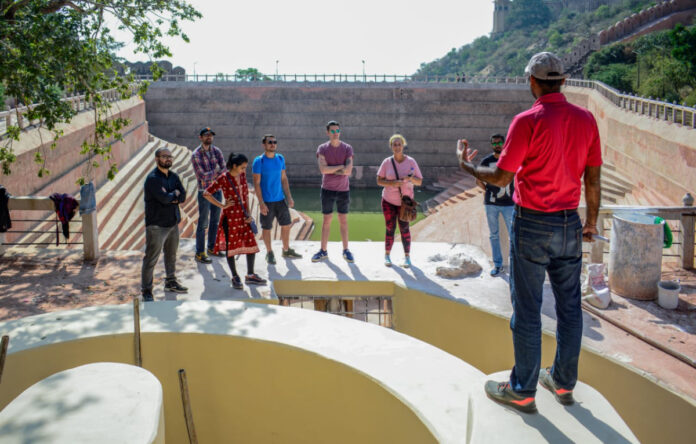NEW DELHI: The city of Jaipur in India’s northwestern state of Rajasthan has for years attracted millions of visitors to its famous heritage sites.
But now tourists can discover even more on walking tours to some of its ancient forts that feature centuries-old water architecture that turned the barren land into a center of culture. The newly introduced heritage water walks offer a mix of storytelling and sightseeing designed by Neeraj Doshi, a graduate of The Fletcher School at Tufts University, who first started them for his friends.
Jaipur, known as the Pink City due to the dominant color scheme of its buildings, is one of the world’s most popular tourist destinations, famed for its iconic monuments such as the Govind Devji temple, City Palace, Jantar Mantar observatory, and Hawa Mahal palace, which UNESCO in its World Heritage List said, “excel in artistic and architectural craftsmanship.”
But Doshi’s tours focus on two sites in the city built next to the wide and inhospitable Great Indian Desert, the 18th-century Nahargarh Fort and 16th-century Amber Fort, and their water collection, harvesting, and storage systems, technological marvels that are still in working order.
“People mostly come to Rajasthan to see its forts and palaces for which it has been known for decades, but very few know about the heritage of water in the region,” Doshi told Arab News.
“These water systems are not only a marvel of engineering but also designed keeping in mind the local geopolitical situation so that even during war or if under attack the system cannot be disturbed. The water resources have been built in such a way that an army can survive for a year.”
Describing himself as a 17th generation of the region’s inhabitants, Doshi considers the water civilization that arose from the desert as the main cultural phenomenon of Rajasthan.
“Somewhere down the line I feel an umbilical connection with that whole region,” he said, adding that organizing heritage water walks was for him a rediscovery of his past and heritage.
He said: “When I started doing it, it was for fun, it was a way of understanding my own background. Friends later told me that if you don’t do this commercially it will not attract attention. Then I gave it a complete formal format and developed it more as a kind of experiential tourism.”
He began the walks in 2017. Initially, the idea did not take off, but recently the tours have become popular with visitors, many of whom have reported back that the walks had changed the way they perceived the city’s cultural heritage.
Amita Pandit, a local entrepreneur, told Arab News: “I was born and brought up in Jaipur and have been to Nahargarh and Amber forts on numerous occasions, but I did not realize the importance of water heritage in these forts until Neeraj explained it. It was an amazing learning experience.”
Delhi-based businessman, Syed Mohammed Qasim, said Doshi’s “knack for storytelling and the passion he exudes in explaining the importance of water in the whole cultural ecosystem of Rajasthan” had changed the way he viewed Jaipur.
“You become enriched as a tourist and your lens for seeing things also changes,” he added.

